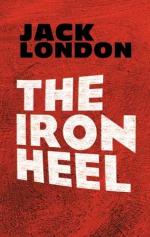He was to select the moment for the throwing
of the bomb, and he naively confesses that in his
interest in Everhard’s tirade and the general
commotion raised thereby, he nearly forgot his
mission.
Not only was he released from prison in reward for his deed, but he was granted an income for life. This he did not long enjoy. In 1914 A.D., in September, he was stricken with rheumatism of the heart and lived for three days. It was then that he sent for the Catholic priest, Father Peter Durban, and to him made confession. So important did it seem to the priest, that he had the confession taken down in writing and sworn to. What happened after this we can only surmise. The document was certainly important enough to find its way to Rome. Powerful influences must have been brought to bear, hence its suppression. For centuries no hint of its existence reached the world. It was not until in the last century that Lorbia, the brilliant Italian scholar, stumbled upon it quite by chance during his researches in the Vatican.
There is to-day no doubt whatever that the Iron Heel was responsible for the bomb that exploded in the House of Representatives in 1913 A.D. Even though the Pervaise confession had never come to light, no reasonable doubt could obtain; for the act in question, that sent fifty-two Congressmen to prison, was on a par with countless other acts committed by the oligarchs, and, before them, by the capitalists.
There is the classic instance of the ferocious and wanton judicial murder of the innocent and so-called Haymarket Anarchists in Chicago in the penultimate decade of the nineteenth century A.D. In a category by itself is the deliberate burning and destruction of capitalist property by the capitalists themselves. For such destruction of property innocent men were frequently punished—“railroaded” in the parlance of the times.
In the labor troubles of the first decade of the twentieth century A.D., between the capitalists and the Western Federation of Miners, similar but more bloody tactics were employed. The railroad station at Independence was blown up by the agents of the capitalists. Thirteen men were killed, and many more were wounded. And then the capitalists, controlling the legislative and judicial machinery of the state of Colorado, charged the miners with the crime and came very near to convicting them. Romaines, one of the tools in this affair, like Pervaise, was lying in jail in another state, Kansas, awaiting trial, when he was approached by the agents of the capitalists. But, unlike Pervaise the confession of Romaines was made public in his own time.
Then, during this same period, there was the case of Moyer and Haywood, two strong, fearless leaders of labor. One was president and the other was secretary of the Western Federation of Miners. The ex-governor of Idaho had been




